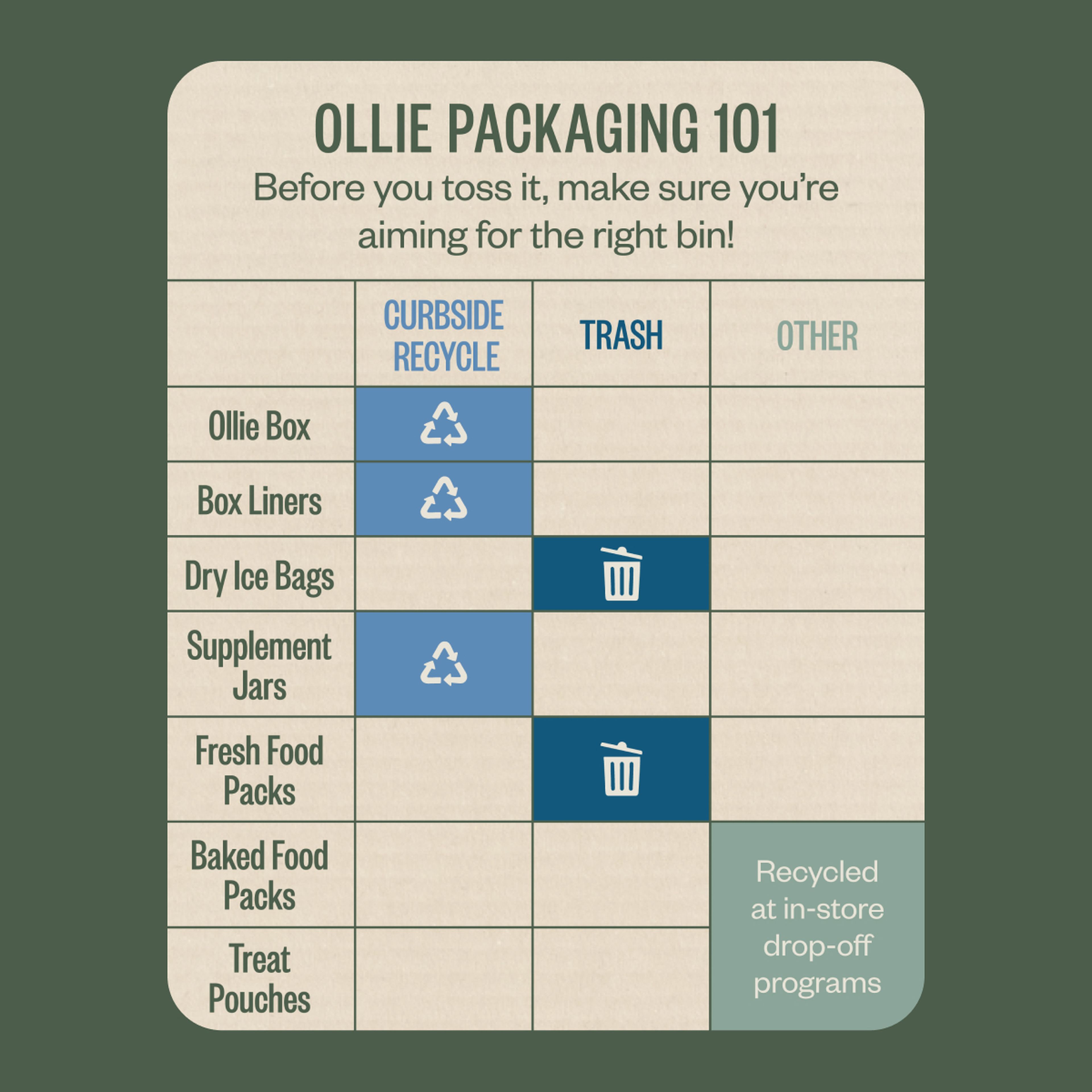
SUSTAINABILITY
Our two main sustainability priorities are Responsible Sourcing and Better Materials, which help us ultimately reduce our environmental footprint.

Responsible Sourcing
The majority of Ollie’s environmental footprint comes from our fresh ingredients. This is because growing and processing food and raw ingredients typically release more greenhouse gases (GHG) than other aspects of a food business. Growing food uses water and chemicals. Farming methods affect animal welfare, human and soil health, biodiversity, and air and water quality.
In 2024, we launched our first certified sustainable protein: MSC-certified and wild-caught Salmon and Coconut Jerky Strips.
In 2025, we established an impact-focused evaluation process for ingredient sourcing. As part of this approach, we have begun to prioritize ingredients that are:
Responsibly sourced and grown using regenerative or sustainable practices
Screened for environmental and processing contaminants
Not contributing to deforestation

Greenhouse Gas Footprint
In 2024, we conducted a comprehensive GHG assessment, which included Scope 1-3 emissions. We’re committed to conducting annual inventories, which will allow us to set GHG reduction goals over time.
In 2025, we started leveraging HowGood to analyze potential GHG emissions and other environmental impacts of our ingredients and recipes. This tool will help our team prioritize which ingredients to move to more sustainable sources. We’re excited to introduce more sustainable ingredients and recipes soon!

Reduce First
In 2025, we conducted our first comprehensive materials audit to understand everything that we buy, use, and ship, to set a progressive plan to reduce, reuse, recycle, and recover materials. We’re working with our vendors to reduce material usage in shipping to our fulfillment centers and to establish waste reduction goals.
Recycling Transparency
We disclose the exact material types on our packaging and website, along with specific instructions on how to dispose of them. This transparency is part of a concerted effort to reduce consumer confusion and "wishcycling.” Learn more about our packaging commitments and the tradeoffs of plastic.
